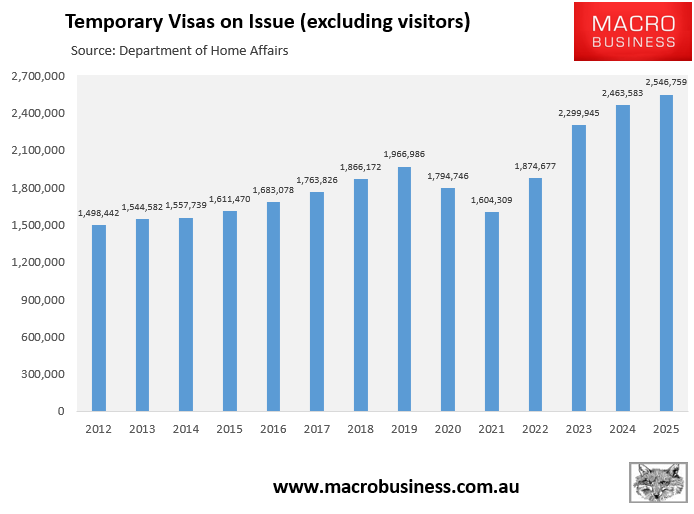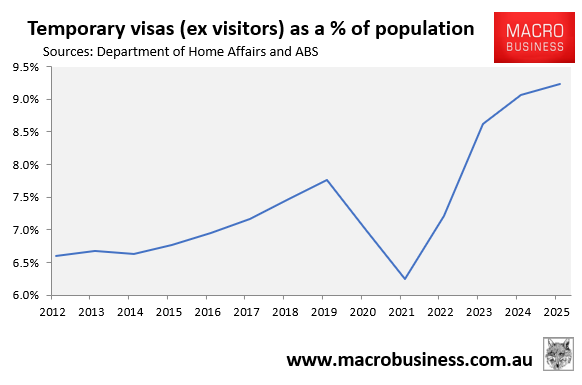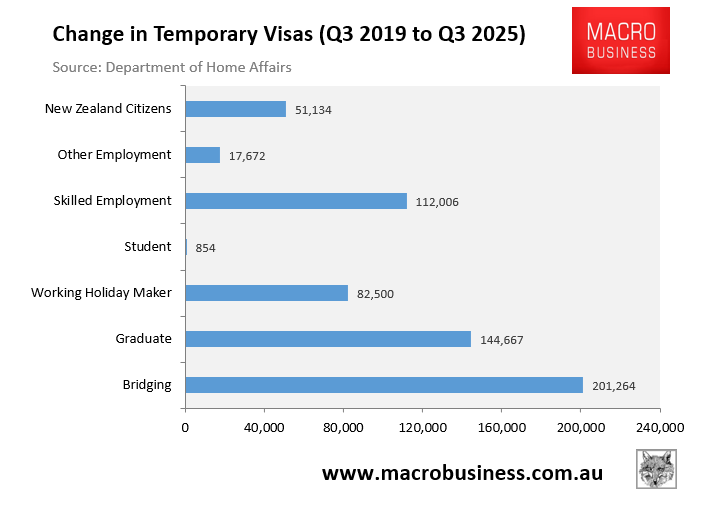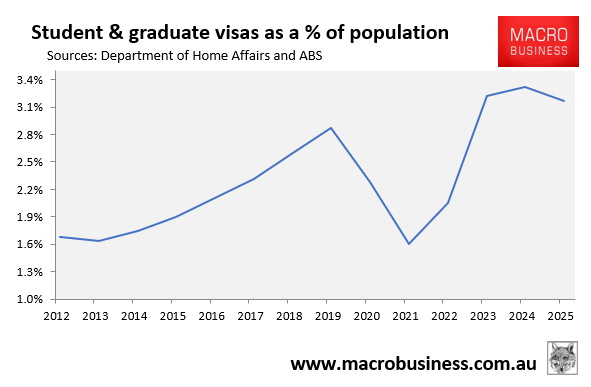When Clare O’Neil was Australia’s Home Affairs Minister, she regularly lamented that Australia’s migration system was too temporary and was holding the nation back.
“Today, really for the first time in our modern history, our uncapped, unplanned temporary program is the centrepiece and driver of our migration system. This simple fact is the source of huge problems”, O’Neil bemoaned in February 2023.
“In 2007, we had about one million temporary migrants in Australia, excluding visitor and transit visas. Today that number is 1.9 million”.
O’Neil repeatedly blamed the former Coalition government for the growth in temporary visas.
“It happened not through thoughtful planning and strategy, but by negligence and continental drift. And, this reliance on temporary migration is having enormous economic and social consequences”, O’Neil claimed.
“This focus on temporariness means that migrants cannot truly flourish”.
The Department of Home Affairs has released temporary visa data for the September quarter, which showed that the number of temporary visa holders in Australia, excluding visitors, hit a record high of 2,547,000, up 83,200 on the prior year’s record:

As you can see, the number of temporary visa holders in Australia in September was tracking 580,000 above the pre-pandemic peak and has risen by 672,100 under the Albanese government.
The percentage of Australia’s population on temporary visas has also ballooned to a record high of 9.2%, up from 7.2% in Q3 2022 just after Labor came to office and from the previous peak of 7.8% just prior to the pandemic.

Therefore, by Clare O’Neil’s own admission, the Albanese government has failed badly on immigration by letting the number of temporary migrants in Australia soar by more than half a million from the Coalition’s pre-pandemic peak.
The following chart plots the time series change in temporary visa numbers by major categories:

The next chart shows the change in temporary visa numbers by category between Q3 2019, just prior to the pandemic, and Q3 2025:

The number of people in Australia on either a student or graduate visa was only a whisker below all-time highs at 874,000 and 166,000 above pre-pandemic levels:

People on student and graduate visas comprised 3.2% of Australia’s population in Q3 2025—almost one in 30 people. This was up from 2.9% at the pre-pandemic peak and almost double the 1.7% share in 2012.

The most notable growth in temporary visas has come from the bridging visa category, which hit a record high of 405,150 in Q3 2025.

Former senior immigration department bureaucrat Abul Rizvi claimed previously that bridging visas are “the most important barometer of the health of the visa system”.
Bridging visas are typically granted for two reasons:
- Bridging visas were handed out because the Department of Home Affairs was unable to process an onshore visa application before the substantive visa that the applicant was on expired.
- Bridging visas are handed to people whose substantive visas have expired while they make arrangements to depart.
Rizvi regularly attacked the former Coalition government for allowing the number of bridging visas to balloon past 100,000 before the pandemic.

Rizvi claimed that the blowout in bridging visas was evidence of “administrative incompetence”.
Bridging visas on issue rose dramatically when borders were closed during the pandemic, as temporary migrants on expired visas were unable to leave.
However, with borders now fully open, the Albanese Labor government has let the number of bridging visas on issue balloon to fresh heights.
If bridging visas are “the most important barometer of the health of the visa system”, then Labor must surely be the most incompetent immigration manager in the nation’s history.
In the lead-up to the 2022 and 2025 federal elections, Prime Minister Anthony Albanese stated that Labor would run a smaller and less temporary migration program.
Instead, Labor has delivered a larger, lower-quality, and more temporary migration program than ever before.

